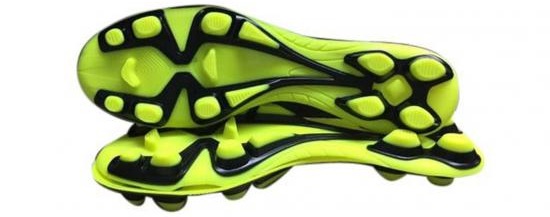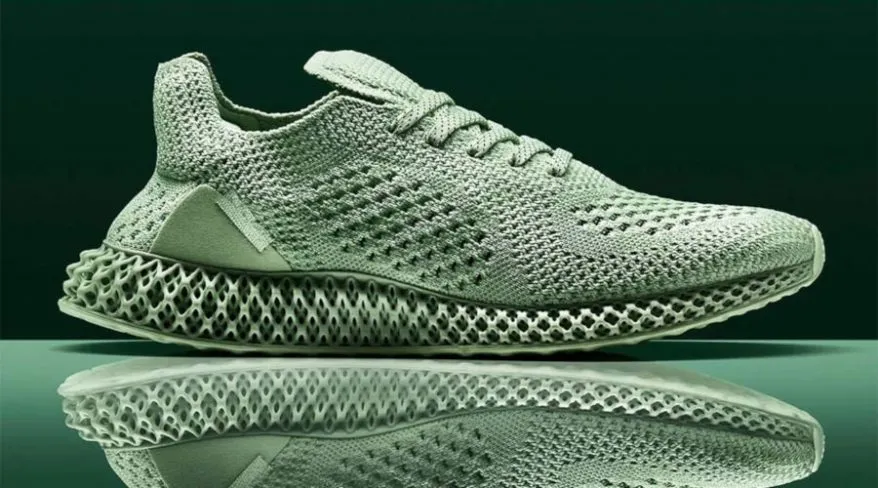
Thermoplastic Polyurethane, or TPU, is a highly versatile material belonging to the polyurethane plastics family. It’s an elastomer, meaning it has the elasticity of rubber and the durability of plastic. TPU is a block copolymer, consisting of both soft and hard segments. The hard segments are typically made of diisocyanate and chain extenders, providing stiffness and strength, while the soft segments are polyols, which give it its flexibility and elasticity. This unique combination allows TPU to offer a wide range of physical properties, making it an ideal material for various applications, particularly in the footwear industry.
TPU is a type of thermoplastic elastomer, meaning it possesses the properties of both rubber and plastic. This polymer can be melted and reformed when heated, making it ideal for processes such as injection molding, extrusion, and 3D printing. It is known for its flexibility, abrasion resistance, chemical resistance, and high tensile strength, which allows it to perform well in demanding environments. These characteristics make TPU especially suitable for applications that require durable, lightweight, and flexible materials, such as in footwear.
How TPU is Used in Footwear
1. Soles and Outsoles
One of the most common uses of TPU in footwear is in the production of soles and outsoles. TPU provides excellent durability and wear resistance, which is crucial for outsoles that come into direct contact with the ground. TPU outsoles are resistant to abrasion, which means they last longer than traditional rubber outsoles, offering a better value for consumers.
The versatility of TPU also allows manufacturers to design outsoles with varying levels of stiffness and flexibility, depending on the specific needs of the footwear. For example:
- Running Shoes: TPU outsoles can provide the right balance between traction and flexibility, ensuring that runners have both grip and comfort.
- Hiking Boots: The rigidity of TPU outsoles can offer better support and stability for rough terrain.

2. Midsole Components
TPU is also used in the midsoles of footwear, where it contributes to cushioning and shock absorption. Its ability to compress and rebound makes it an ideal material for providing support and comfort in shoes designed for high-impact activities like running or jumping.
Many athletic shoe manufacturers use TPU in combination with other materials, such as EVA (Ethylene Vinyl Acetate), to create a midsole that provides optimal comfort, responsiveness, and energy return. Some of the benefits of using TPU in midsoles include:
- Improved Energy Return: TPU’s elastic properties allow it to return energy efficiently, which helps reduce fatigue during prolonged physical activities.
- Lightweight: TPU offers significant weight reduction when compared to other cushioning materials without compromising on support.
- Durability: TPU can withstand repeated compression cycles without breaking down, making it a long-lasting option for high-performance footwear.

3. Upper Components and Shoe Reinforcements
In addition to its use in soles and midsoles, TPU is often used in the upper portion of shoes, especially for reinforcements. TPU film is commonly used in areas such as:
- Lacing Systems: TPU is used to create durable eyelets and lace loops that resist wear and tear.
- Heel and Toe Caps: TPU’s high resistance to abrasion and impact makes it ideal for reinforcing the heel and toe areas of shoes, enhancing their durability.
- Waterproofing and Weatherproofing: TPU coatings and films are often applied to shoe uppers to make them resistant to water and harsh weather conditions, especially in outdoor and athletic footwear.

4. 3D Printed Footwear
The introduction of 3D printing technology into footwear design has opened new avenues for innovation, and TPU plays a significant role in this process. TPU’s flexible nature makes it well-suited for 3D printing, allowing designers to create customized, lightweight, and ergonomically designed shoes tailored to individual foot shapes.
For example:
- Custom Insoles: 3D printing with TPU can create personalized insoles that provide targeted cushioning and support based on the specific contours of an individual’s feet.
- Shoe Upper Design: TPU’s adaptability in 3D printing enables the creation of complex, breathable, and flexible upper designs that enhance both comfort and performance.

5. TPU in Sports Footwear
Sports footwear brands have also embraced TPU in high-performance shoes designed for athletes. In particular, the material is prized for its ability to withstand extreme pressure, offer superior support, and maintain structural integrity during intense physical activities. The use of TPU in these products enhances:
- Stability: TPU provides firm support and stability in shoes designed for activities such as basketball, tennis, and running.
- Speed and Agility: The responsiveness of TPU allows for quick transitions and agile movements, especially in performance footwear used for track and field, soccer, and other high-intensity sports.
Benefits of TPU in Footwear
1. Durability
TPU’s resistance to abrasion, chemical exposure, and extreme temperatures makes it incredibly durable. This longevity extends to footwear, reducing the need for frequent replacements. Shoes with TPU components can endure wear and tear from regular use, whether it’s hiking on rocky trails, running on pavement, or enduring everyday walking.
2. Comfort
Due to its elastic nature, TPU offers enhanced comfort in footwear. It provides cushioning and shock absorption without sacrificing support. This comfort is especially crucial for footwear used in sports and physical activities, where high-impact forces are at play. TPU midsoles, for instance, can absorb shocks during running or jumping while maintaining their structural integrity over time.
3. Lightweight
TPU is a lightweight material, which is particularly advantageous for athletes and active individuals. Footwear with TPU components, such as outsoles or midsoles, offers a reduction in weight, improving overall performance. Lightweight shoes reduce fatigue and enhance the wearer’s speed and endurance, making TPU an ideal choice for running shoes, trail shoes, and sports footwear.
4. Flexibility and Customization
The flexibility of TPU allows manufacturers to create shoes that adapt to different foot movements. Additionally, its versatility makes it easier to customize shoes for specific uses. Whether for running, basketball, hiking, or fashion, TPU can be tailored to meet the demands of diverse applications.
5. Sustainability
While traditional plastics can contribute to environmental issues, TPU is considered more sustainable because it is recyclable. Manufacturers can reuse TPU components, which reduces waste and lowers the environmental impact of footwear production. Furthermore, TPU is more energy-efficient to produce compared to some other materials, making it a more eco-friendly option for footwear.
The Future of TPU in Footwear
The use of TPU in footwear is expected to continue to grow, driven by innovations in material science and increasing demand for high-performance and sustainable materials. Researchers are working on developing bio-based TPUs from renewable sources to reduce the industry’s environmental footprint. Additionally, advancements in 3D printing technology are opening up new possibilities for creating highly customized and complex shoe components using TPU, such as personalized insoles or intricate lattice structures for midsoles. The material’s versatility, combined with ongoing research and development, ensures its continued relevance and expansion in the dynamic footwear market.

Future developments could lead to:
- More Advanced 3D Printing: As 3D printing technology continues to evolve, it is likely that TPU will play a larger role in creating customized and performance-enhancing footwear. This could lead to shoes that are more tailored to the individual, providing a perfect fit and improving comfort.
- Sustainable TPU Innovations: With growing interest in sustainability, there could be more research and development focused on creating bio-based or more eco-friendly versions of TPU.
- Smart Footwear: The integration of smart technology in footwear, such as sensors for monitoring foot pressure or motion, could benefit from TPU’s flexible and durable properties, making it an essential material for future smart shoe designs.
Conclusion
The use of TPU in footwear has transformed the way shoes are designed, offering benefits such as enhanced durability, flexibility, comfort, and performance. Whether in athletic shoes, hiking boots, or everyday wear, TPU’s adaptability and resilience continue to make it a go-to material for footwear manufacturers. As sustainability and customization become more important to consumers, TPU’s role in footwear is likely to grow, offering exciting opportunities for innovation in the years to come.
Incorporating TPU into footwear not only elevates the functionality of the shoes but also opens new possibilities for personalized, sustainable, and high-performance designs. Whether you’re a professional athlete or a casual shoe wearer, TPU’s advantages are evident in every step you take.
